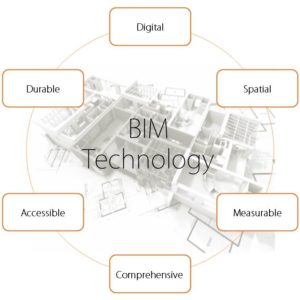Definition of BIM Technology
 Unfortunately, BIM still has no single, widely-accepted definition. Let’s think of it as “an intelligent simulation of architecture”.
Unfortunately, BIM still has no single, widely-accepted definition. Let’s think of it as “an intelligent simulation of architecture”.
This “simulation” must have six key characteristics to enable us to achieve integrated delivery, it should be:
- Digital
- Spatial (3D)
- Measurable (quantifiable, dimension-able and query-able)
- Comprehensive (encapsulating and communicating design intent, building performance, constructability, and include sequential and financial aspects of means and methods)
- Accessible (to the entire AEC/owner team trough an inter operable and intuitive interface)
- Durable (usable through all phases of a facility’s life)
There are no current BIM software that meet all of the BIM technology criteria. Over time, software capabilities will grow (as will our ability, too) to support more extensive practices.
Current Revit® (2017) capabilities covers most of them. There is no single characteristic that Revit® does not cover in some part, so, for few of them is far from perfect, for example: Revit® tables are query-able, but not as nearly powerful as any of known databases. The entire AEC/owner team can (theoretically) use and work on single interface, but (practically) it’s unusable, or far from perfect. Also, model is very usable through many typical phases of facility’s life, but for some of them is simply said ‘very limited’. Any shop documentation is hard to produce, there is very little automation in this area, no CNC support, it is still dependant on many additional software.
Can’t wait to see after five or more years to see what will it become.
